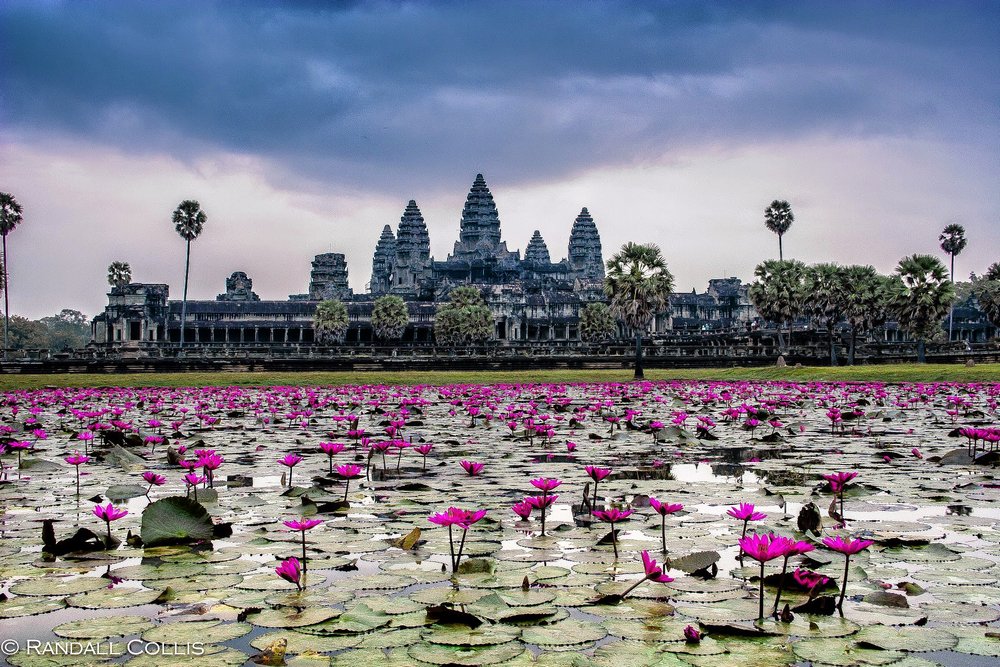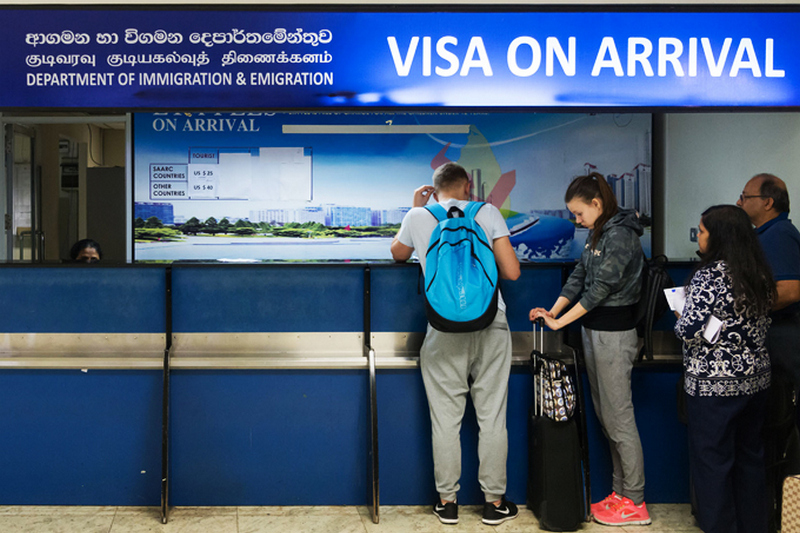How to Plan a Trip to Angkor Wat, Cambodia?
If you’re planning a trip to Cambodia, one of the must-see attractions is the ancient city of Angkor Wat. This UNESCO World Heritage Site attracts visitors from all over the globe, who come to marvel at its stunning architecture, intricate carvings, and rich history. But before you book your trip, it’s important to do some research and plan ahead to make the most of your visit. In this post, we’ll cover everything you need to know to plan your trip to Angkor Wat, including the best time to visit, getting there, admission information, suggested itineraries, photography opportunities, accommodation options, where to eat and drink, currency and prices, and health and safety considerations.
Best Time to Visit Angkor Wat
The best time to visit Angkor Wat is during the dry season, which runs from November to March. During these months, the weather is cool and dry, with clear blue skies and little rain. This makes it the perfect time to explore the temples and take photographs without having to worry about rain or humidity.
However, this is also peak tourist season, so expect larger crowds and higher hotel rates. If you want to avoid the crowds, consider visiting during the shoulder seasons of April-May and September-October. The weather is still relatively dry and sunny, but there are fewer visitors and lower prices.
If you don’t mind rainy weather, you can also visit during the wet season from May to October. The upside of visiting during this time is that the temples are lush and green, and the rain cools down the temperature and helps reduce the crowd. Note that visiting during the wet season requires additional preparation as there may be flooding or landslides.
Getting There
There are two main ways to get to Angkor Wat: by air or by land.
By Air
The nearest airport to Angkor Wat is Siem Reap International Airport, which is located about 7 kilometers from the city center. Many major airlines fly into Siem Reap, including AirAsia, Thai Airways, and Vietnam Airlines. From the airport, you can take a taxi or tuk-tuk to your hotel or guesthouse in Siem Reap.
By Land
If you are traveling overland, you can reach Siem Reap by bus or private car from Phnom Penh or Bangkok. The journey from Phnom Penh takes around 6 hours, while the journey from Bangkok takes around 8 hours. If you’re feeling adventurous, you can also take a boat from Phnom Penh along the Tonle Sap river to Siem Reap.
Getting Around
Siem Reap is a relatively small city, and most of the hotels, restaurants, and tourist attractions are located within a few kilometers of each other. The main modes of transportation in Siem Reap are tuk-tuks and taxis.
Tuk-tuks are a popular and fun way to get around, and they are readily available throughout the city. They can be hired by the hour or for a specific trip, depending on your needs. Taxis are also available, but they tend to be more expensive than tuk-tuks.
Another option for getting around is to rent a bicycle or motorbike. This is a great way to explore the temples and countryside at your own pace, but it requires some experience with riding a bike or motorcycle.
Admission
Admission to Angkor Wat is sold as a one-day pass ($37), three-day pass ($62), and seven-day pass ($72). The passes are non-transferable and must be presented with a photo ID when entering the temples.
It’s important to note that the one-day pass is only valid for the day of purchase, while the three-day and seven-day passes can be used on any day within a week. If you plan to visit multiple temples or stay in Siem Reap for several days, it’s worth purchasing a multi-day pass to save money.
Suggested Itineraries
There are dozens of temples to explore in Angkor Wat, so it’s important to plan your itinerary ahead of time to make the most of your visit. Here are some suggested itineraries based on how much time you have:
One Day Itinerary
If you only have one day to spend at Angkor Wat, here’s a suggested itinerary:
- Sunrise at Angkor Wat
- Explore the temples of Bayon and Baphuon
- Visit the Terrace of the Elephants and Terrace of the Leper King
- Lunch break
- Visit Ta Prohm temple (popularized by Tomb Raider movie)
- End the day with sunset view from Phnom Bakheng or Pre Rup temple
Three Day Itinerary
If you have three days to spend at Angkor Wat, here’s a suggested itinerary:
- Day 1: Sunrise at Angkor Wat, explore the temples of Bayon, Baphuon, and Phimeanakas, visit the Terrace of the Elephants and Terrace of the Leper King
- Day 2: Visit Ta Prohm temple in the morning, followed by Preah Khan, Neak Pean, and Ta Som in the afternoon
- Day 3: Visit Banteay Srei, Kbal Spean waterfall, and Beng Mealea temple
Five Day Itinerary
If you have five days to spend at Angkor Wat, here’s a suggested itinerary:
- Day 1: Sunrise at Angkor Wat, explore the temples of Bayon, Baphuon, and Phimeanakas, visit the Terrace of the Elephants and Terrace of the Leper King
- Day 2: Visit Ta Prohm temple, Preah Khan, Neak Pean, and Ta Som
- Day 3: Visit Banteay Srei and the Roluos Group (Bakong, Lolei, and Preah Ko)
- Day 4: Visit Beng Mealea temple, Koh Ker temple complex, and Preah Vihear temple
- Day 5: Explore Siem Reap city, visit the Angkor National Museum, local markets, and shops.
Photography Opportunities
Angkor Wat is a photographer’s paradise, with endless opportunities for capturing beautiful images. Here are some tips for getting the best shots:
- Sunrise and sunset: The best time to take photos of the temples is during sunrise and sunset, when the light is soft and warm and the temples are bathed in a golden glow.
- Use a tripod: To get sharp images, use a tripod or steady surface to keep your camera still.
- Bring a polarizer: A polarizing filter can help reduce glare and enhance colors, especially in bright sunlight.
- Explore different angles: Don’t just shoot straight on – experiment with different angles and perspectives to create unique and interesting compositions.
- Capture details: Angkor Wat is full of intricate carvings and details, so don’t forget to zoom in and capture the small details that make the temples so special.
Where to Stay
There are plenty of accommodation options in Siem Reap to suit all budgets and preferences. Here are some popular options:
Luxury Hotels
- Raffles Grand Hotel d’Angkor: This iconic hotel oozes colonial charm and luxury, with spacious rooms, a beautiful pool, and an excellent spa.
- Amansara Resort: This boutique resort offers luxury villas and suites set in beautifully landscaped gardens, with a pool, spa, and gourmet restaurant.
Mid-Range Hotels
- Tara Angkor Hotel: This modern hotel features comfortable rooms, a rooftop pool, and a convenient location close to the city center.
- Jaya House River Park: This eco-friendly hotel offers stylish rooms, a beautiful pool, and an excellent restaurant, all set in lush green gardens.
Budget Hotels
- Garden Village Guesthouse: This friendly guesthouse offers clean and comfortable rooms at affordable prices, with a beautiful garden and swimming pool.
- Onederz Hostel Siem Reap: This popular hostel features comfortable dorms and private rooms, a rooftop bar, and a great location near the night market.
Where to Eat
Siem Reap is renowned for its delicious Khmer cuisine, as well as international options ranging from Italian to Mexican. Here are some recommended restaurants to try:
Khmer Cuisine
- Cuisine Wat Damnak: This award-winning restaurant serves innovative Khmer cuisine using locally-sourced ingredients.
- Mahob Khmer Cuisine: This cozy restaurant offers traditional Khmer dishes, as well as cooking classes and a market tour experience.
International Cuisine
- The Dolphin: This Italian restaurant serves delicious wood-fired pizzas and pasta dishes, as well as cocktails and wine.
- Vibe Cafe: This vegetarian cafe offers healthy and tasty options, including salads, smoothies, and vegan burgers.
Where to Drink
Siem Reap has a vibrant nightlife scene, with plenty of bars and clubs to choose from. Here are some top picks:
Rooftop Bars
- Sora Sky Bar: This rooftop bar offers stunning views of the city and serves creative cocktails and snacks.
- Angkor What? Bar: This popular backpacker bar has been around for decades, offering cheap drinks, live music, and a lively atmosphere.
Nightclubs
- Temple Club: This stylish nightclub is located in a converted colonial mansion and features multiple dance floors, DJs, and VIP areas.
- Pontoon: This large nightclub is a favorite among locals and tourists alike, with multiple bars, a pool, and regular events and DJs.
Currency and Prices
The official currency of Cambodia is the riel, but US dollars are widely accepted throughout the country and are often used for larger purchases. Creditcards are also accepted at many hotels, restaurants, and shops in Siem Reap.
Here are some typical prices to give you an idea of how much things cost in Siem Reap:
- One-day pass to Angkor Wat: $37
- Tuk-tuk ride from Siem Reap to Angkor Wat: $10-15
- Meal at a mid-range restaurant: $5-10
- Beer at a bar or restaurant: $1-2
- Budget hotel room: $15-30 per night
- Luxury hotel room: $150-300+ per night
Health and Safety Considerations
Siem Reap is generally a safe city for tourists, but it’s important to take some basic precautions to stay healthy and avoid scams or theft.
- Vaccinations: Make sure you are up-to-date on routine vaccinations, as well as hepatitis A and typhoid. You may also want to consider getting vaccinated for cholera, Japanese encephalitis, and rabies, depending on your travel plans.
- Mosquitoes: Siem Reap is at risk for mosquito-borne illnesses like dengue fever and Zika virus, so make sure to bring insect repellent and wear long-sleeved shirts and pants when possible.
- Heat and sun: The weather in Cambodia can be very hot and humid, especially during the summer months. Stay hydrated by drinking plenty of water and electrolytes, and wear sunscreen and a hat to protect yourself from the sun.
- Scams and theft: Like any tourist destination, there are scammers and pickpockets in Siem Reap. Use common sense and be aware of your surroundings, especially in crowded areas or at night. Don’t carry large amounts of cash or valuables with you, and be wary of strangers offering tours, transportation, or other services.
Conclusion
Angkor Wat is a must-see destination for anyone visiting Cambodia, and with some careful planning, you can make the most of your visit. Whether you’re interested in history, architecture, photography, or just soaking up the culture, there’s something for everyone at this stunning UNESCO World Heritage Site. Just remember to pack comfortable shoes, sunscreen, and plenty of water, and get ready for an unforgettable adventure.
FAQs
What language do they speak in Cambodia?
The official language of Cambodia is Khmer, but English is widely spoken in tourist areas.
Do I need a visa to visit Cambodia?
Most visitors to Cambodia need a visa, which can be obtained on arrival at the airport or land border, or online in advance. The cost is $30 for a tourist visa and $35 for an e-visa.
What should I wear when visiting the temples?
Modest dress is required when visiting the temples, so make sure to cover your shoulders and knees. Comfortable shoes are also recommended as you will be doing a lot of walking.
Can I hire a guide at Angkor Wat?
Yes, there are many licensed guides available for hire at Angkor Wat. A guide can provide valuable information about the history and culture of the temples, as well as help navigate the complex.




